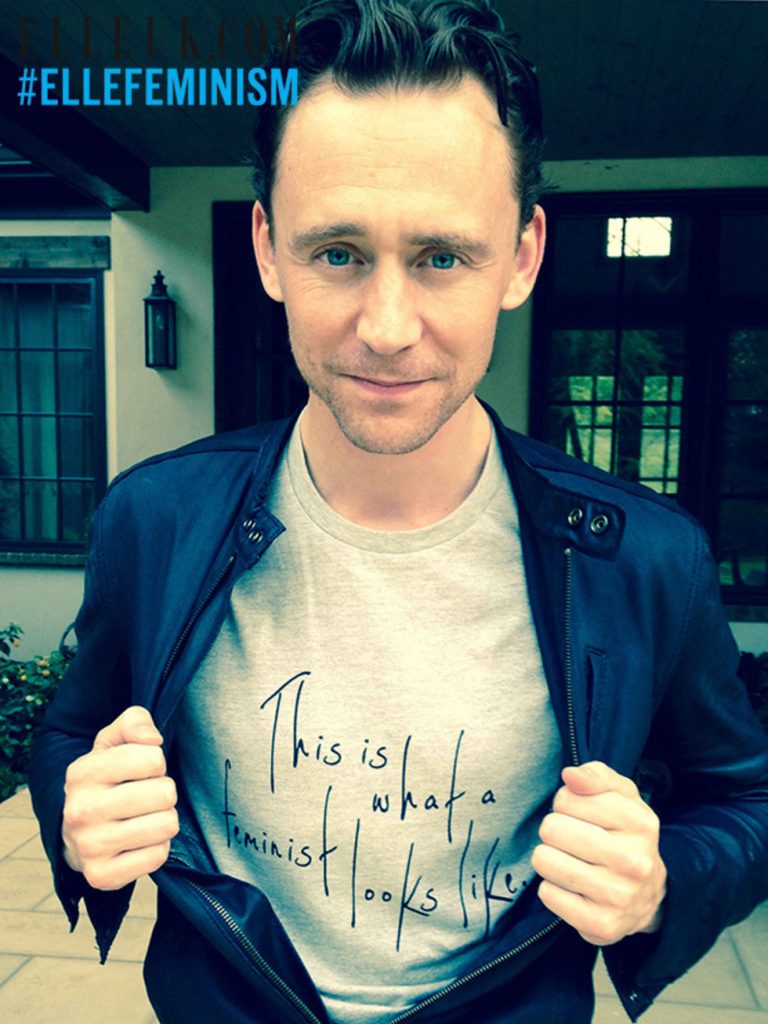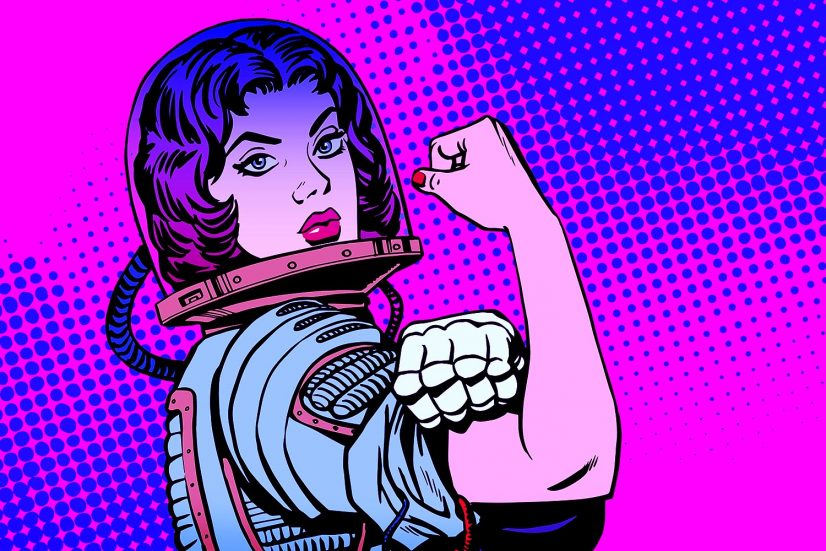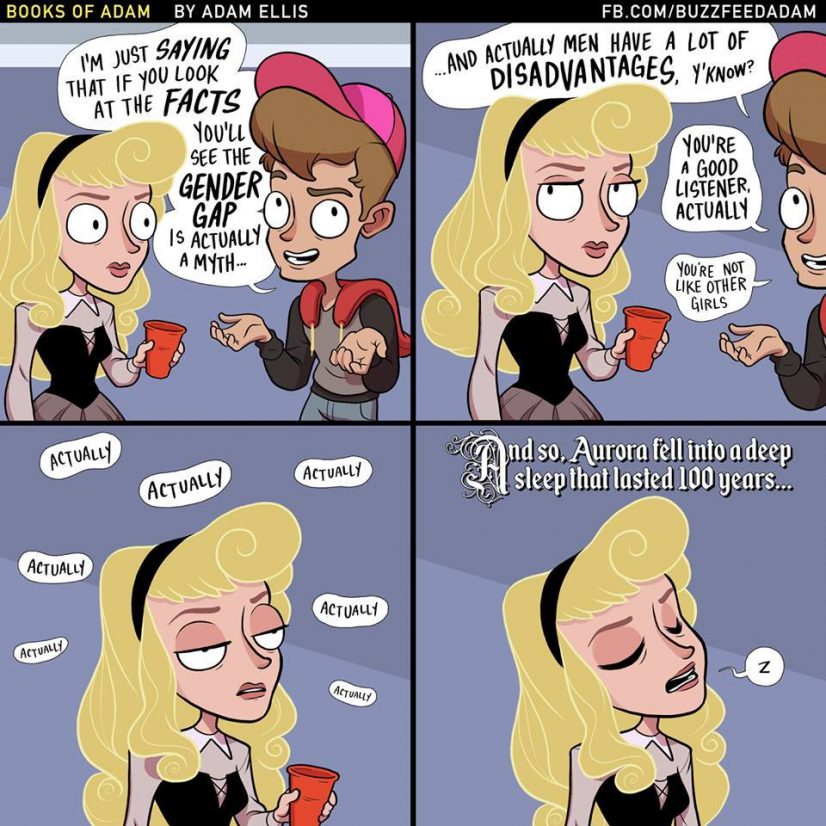We have learnt through my previous article “Clearing the Confusion on Feminism”, that there is an intrinsic relationship between feminism and the patriarchy. That the patriarchy also deals with more than just the oppression of women. But also how it can affect relations with other men. Patriarchy feminism is often another misunderstood concept. The issue with that, is that it is thought of as a counter argument to feminism, when this is not at all the case. Ammu Joseph neatly unpacks the term patriarchy in ‘Missing Half The Story: Journalism as If Gender Matters’.
In this we unpack patriarchy etymologically via its Latin roots. That being that Pater is the Latin word for father, with the addition of Archy which is the Latin word for Rule.
Literally, the term patriarchy simply refers to the rule of the father. It refers to a society in which a single male would dominate and lead a family, junior men, women and slaves.
History of Patriarchy
In the course of human history, patriarchy actually plays a very small part in society. It is often argued that in the beginning of human culture and society, that women were very much looked at as equals. Primarily through their mysterious and misunderstood power of childbirth. But were genuinely revered as equal and productive individuals within society.
Before the patriarchal rule many social historians, including Joseph, argue that patriarchal rule shifted through a perceived shift of social power, primarily through the concept of war.
For a variety of reasons, which did not focus on physical prowess, men were sent to war to conquer and pillage resources. Since it was the men that would conquer, there was a sense of ownership placed on the new resources. Great effort was placed in obtaining this new land and new resources it was natural that they wanted to preserve that, own it, and ultimately pass it on to their children.
In this way, because men were seen as owners of resources, land and permanent dwellings, the foundations of patriarchy and male rule was formed.
What About Patriarchy Now?
Patriarchy now rarely refers to this system of male ownership in this way. It is used to categorise and label a system of male privilege, unequal power relations between biological sexes. Annd the oppression of others from men.
This oppression can occur towards women and other men in public and private spheres such as the household, workplace, society. It is exemplified through behaviours, patterns of language, interpersonal behaviours and constructed stereotypes.
This also includes against biological males which under-perform, or even over perform the societal expectations of their masculinity, as the idea of maleness is currently, inescapably linked to the concept of masculinity.
Feminism is about destabilising the dominance of patriarchy
Not only to free women from the constraints that they are placed under, but also free men from being trapped by their own masculinity. To this extent, in recent years we have seen the rise of males caring about their appearances, engaging in fashion in new ways. And also breaking down barriers surrounding emotions, feelings and mental health.
In this regard, it is an important point to make that it is the performance of gender which feminists are opposed to and not sex. It is ultimately, and decisively a response to a patriarchal system and not men.
With that in mind, we can therefore disregard feminism as an attempt to overthrow and replace a patriarchal system
Because to do so would mean to replace it with a matriarchal system, which is not the aim of feminism at all.
Joseph defines feminism using the work of K. Bhasin and Nighat Said Khan which describes it as:
‘An awareness of women’s oppression and exploitation in society, at work, and within the family and the conscious action by both women and men to change this situation.’
Maintenance of feminism, and its definition is governed by its relationship to primarily women, but also by men.
It is thus clear that the relationship between the patriarchy and feminism affects both men and women individually through each system.
This, Nancy Levit suggests, is: ‘One side of the picture has remained in the shadows – the way that the patriarchy affects men. Maleness is both a privileged and victimized status’, that has occurred throughout the women’s movement.
This statement by Levit is not meant to place men in a comparative state to women through each movement. But rather highlight the effects that each system has on both of the sexes as they grow.
Indeed, Allan Johnson, the author of The Gender Knot: Unraveling our Patriarchal Legacy, believes that most men and women participate in this system without consciously intending to oppress or be oppressed. Without even being aware that the system exists.
They participate in the rat race because that’s what they’ve been told and taught to do
Happiness is tied with wealth and possessions, and that type of system automatically favours men.
Some Social Studies academics and theorists will link the patriarchy and this system to ideas of capitalism and the economic structure and system which holds humans captive to the ideas of an ever increasing idea of production and productivity. Where such a system is based on a predestined failure and impossibility of an infinite and continual sense of economic growth.
This loosely relates to the origins of the original concept of patriarchy to the needs of possessions, materialism, wealth, land and ownership.

Patriarchy Feminism
Feminism is moving towards the idea that men can be feminists. They should be feminists because the patriarchy system affects their lives as it does women, although not to the same extent. (Claire Warner)
The patriarchy does affect men in a beneficial way, although there are many ways in which the patriarchy affects men negatively as well. Such as the way in which masculinity is often described as being toxic.
Feminism and masculinity are products of the patriarchy
That being that they are two terms that were brought forth in order to combat the power of the patriarchy.
Masculinity is the system brought forth by the patriarchy that attempts to categorise men within a hierarchical system against each other. Rita Nakashima Brock states that men are socialised and reinforced in their behaviours and attitudes through masculinity. Which directly represents their ability to perform their biological sex.
For example, the issue between masculine sex drive, and feminine sex drive and the differing pressures, opinions, shaming and stigmas placed on both young men (Studs) and women (sluts) in terms of sex drive. Overt sexuality for a young male is ultimately perceived to be different for a young female.
Feminism and its relationship to masculinity is breaking this down.
Getting people to consider the idea of relationships as opposed to casual sex (Femininity), and dismissing the stigmas attached with casual sex (masculinity).
The problem with the stereotype of male sexual aggressors as ‘boys will be boys’, and ‘sowing his wild oats’ is so entrenched in society. For decades, scientific research worked on the assumption that men naturally had a higher sex drive than women. And a passivity in sexual relations for a male was considered abnormal.
It’s only recently that we have discovered different types of sexual arousal and sexual response cycles as opposed to a masculine and feminine one. It is through feminism with which we find the notion of being male, and masculinity, being challenged.
Dichotomy of masculinity can only exist as with its presumed opposition, femininity.
Time and time again throughout these articles, I have put forward the notion that the dichotomy of masculinity can only exist as with its presumed opposition, femininity. That being they define each other, and exist through each other’s definitions.
Women are women because they are not men and vica versa.
If a female no longer acts in a predisposed and conventional way, thereby changing the expectation of femininity, then masculinity automatically changes as a response.
This sentiment is echoed by Sussman Herbert in Masculine identities; The history and Meanings of Masculinity who adds that the liberatory movements of women, blacks, and gay men have enriched the lives of men and masculinity. And opened new possibilities when it comes to men and ultimately, together, bear the responsibility of changing the concept of masculinity.
Another way in which masculinity, has been changed through feminism is the onus of responsibility being placed back on males.
There have been many instances where ‘excuses’ are made in order to shame women.
For example, when it comes to sexual assault people try and palm off the responsibility onto the female for the way she held her body, her clothes, he demeanour, her behaviour towards previous men.
Sexual assault is a male issue, not a women’s issue.
It is an idea which places women in control of their bodies, and men in control of their own, sexual assault is therefore a failing of control from a male. And not a female in how she chooses to respond to society with her body. Shira Tarrent in Men and Feminism: Seal Studies – firmly reminds us of the idea that since it is the men which are the ones who commit the majority of sexual offences. Then it is ultimately time for men to stand up and face them.
In this respect, it is from this point which started The White Ribbon Foundation. An organisation to prevent violence against women that originated in the nineties in Canada which places the responsibility on men to face up to the issue and take a stand against it.
When it comes to ideas of masculinity, power and feminism there exists a lot of surrounding fear.
The issue is, as Shira states, lies in the idea that men fear feminism because they perceive it as a loss of social and political power. Further, the idea that power is considered a finite resource and that there is an ebb and flow when it comes to the idea of power; that being when someone loses power, someone else gains power.
Power should not be deemed as a limited resource. In this way, feminism should be viewed as being about ‘breaking down gender expectations that limit everyone’. This subtle shift away from a gross misunderstanding of viewing feminism as a replacement to patriarchy, and reaffirms feminism back to its original intention. Freedom to equality for all.
Fear lies not in the change
But about the idea of replacement. If we change the focus that feminism is not a replacement, to the patriarchy then we can view the idea that feminism actually critiques masculinity, and holds the notion of masculinity in check.
It frees both men and women from the constraints of masculinity, and ultimately the patriarchy. Feminism brings forth the idea which suggests that a patriarchal society has always exaggerated the biological differences between masculine and feminine roles and the dominant and subordinate discursive stereotypes attributed to them. (Kate Millet).
It did this to reinforce ideologies of power and control. And it is these attributes which desperately need to change, to free not only women but men as well.
Victoria Bromley in Feminism Matter: Debates, Theories, activism understands this need for freedom when she states;
‘Feminism provides men with a lens to see hegemonic masculinity as an unattainable caricature of manhood. It releases men from the never-ending struggle, and ultimately inevitable failure, to measure up as real men.’
Fluid Dichotomies
It is clear that the dichotomies of male and female, and the discursive practices surrounding that such as feminine, masculine, patriarchy are fluid.
They both require and demand change as a reaction and response to, and from, each other. Functioning as a dynamic duo and reliant on each other in order to direct and construct change.
Feminism is a misunderstood headline
It’s often thrown around complacently through a severe lack of understanding and as such – it is a concept which has had its name often dragged through the mud. On the same token, patriarchy and masculinity are also often misunderstood via conduits of perceived power and superiority.
When they suffer from constraints, if not to the same extent, as which surrounds women, femininity and feminism.

Feminism: Clearing the Confusion
It’s a complex world, and it’s an ever changing world.
As humans progress through life and existence, our free will and our thoughts are constantly being challenged as we grow and these challenges help us learn and develop.
In turn, these thoughts grow into new ones and as a result society, and how we operate as a collective species, is a constantly evolving process towards the idea of a perceived perfection of humanity.
There will never be perfection though, despite our vanity in trying to achieve it.
The thing is, that humans have been engaging in, and debating, philosophical thought since humans could converse, and this is a fundamental aspect as to how we learn and grow collectively; through discussions. Discussions played an enormous role in Ancient Greek culture from Plato, to Aristotle – philosophers whose thoughts on the social structure and humanity are still being discussed today.
This article has not the scope to discuss the history of feminism.
Since I identify as a cisgendered queer male, I am limited in my approaches to feminism. Brian Klocke in, Roles of Men with Feminism and Feminist Theory, succinctly puts this setback by making the suggestion that I, as a male who benefits from a patriarchal world, simply cannot escape the power and privilege that I am granted in contrast to women.
Whilst he stops short of echoing The Second Sex’s feminist and philosopher author, Simone de Beauvoir’s argument that I cannot be an outright feminist due to the inherent differences between male and female. He does argue that since the goal of feminism is liberating women that ‘men must be a part of the struggle’.
Feminism is therefore argued to be an intrinsic part of the patriarchy
They rely on each other to change and grow. Through my identification of Queer which is also subject to the oppression of mainstream society, I can find myself in a different perspective to understand feminism whilst acknowledging that that position is not empathetic or comparable to feminism.
With that in mind – let’s aim to simplify the following questions.
What role do men play in feminism and how does such a role within feminism affect men?
Feminism has been one such political thought that has transgressed through the ages, and it has been in both a constant state of evolution as well as existing in a state of conflicting confusion.
Why is the concept of feminism deemed to be so confusing then, and why is it considered to be a dirty word?
Lynne Segal in ‘Why Feminism?: Gender, Psychology, Politics’ (1999) suggests that while groupings of women have similar issues when it comes to an economic front (Pay inequality) , or on social policy (Welfare resources). They are actually fractured when it comes to uniting around issues of sexuality and the meanings that society attach to the female body.
The reason for this is remarkably simple.
Each individual woman has far different experiences to each other when it comes to how they are female, how they perform as females, their relationship to their own bodies, and the relationship from that body to society.
This difference might stem from a cultural (mis)understanding, from a difference in race, sexuality labels or even class. Therefore a woman with an upbringing in America is going to have different values, opinions and experiences than an indigenous Australian woman, a woman raised in Asia, and a woman brought up in an African Tribe.
Feminism is thus often thought of as confusing
Because of the broadness of its application and the way that, like most political thoughts, it is interpretable to different individuals within society. Based on such factors such as class, race, sexuality, and religion.
Feminism has ultimately, at times, applied as an umbrella term, and often erroneously used as a platform of privilege for a cis gendered white woman. This is primarily what separates the different waves of feminism and also why it is often critiqued.
It is perceived to have a flaw in regards to the level of inclusivity
One experience is not, and should not be, representative of all. Feminism, like Queer Theory, has often been criticised for being under representative and for failing to be inclusive to all. This has resulted in sub-sections of feminism (and queer theory) which deviates from the normal aims of the movement.
These deviations often receive negative commentary as to the extremist views of which they contain and ultimately serve to diminish. And often tarnish, the original aim of the movement.
It is through this media representation which causes the most misunderstandings of feminist theory, and results in people of both sexes becoming disgruntled at a movement designed to benefit them.
In all philosophical, religious and social groups, there are a myriad of different interpretations.
There usually exists three main interpretations, moderate, conservative, and extremist.
One of the main points when it comes to the interpretation of feminism is a mass media tendency to lean towards sensationalist extremist views despite them representing only a small fraction of the contemporary feminist movement (hooks, 2004). Which often drown out the crux of the movement.
Mulloy, in his book ‘American Extremism: History, politics and the militia movement’ (2004) struggles to pin down the definition of extremist views. He advocates that extremism, like many political concepts is difficult to define due to the understanding that it is a relativistic term and therefore relies on social context in order to make it extreme.
By that it is meant that extreme implies that it is against something else in a profound way. Thereby allowing it to be subjected to the process of ‘othering’ (J. Lacan, Freud, Hegel). Alowing a platform for the dichotomy of them vs us.
In other words, something can only be deemed extreme, if there is something for it to be considered extreme against.
The dichotomy of them vs us, is a concept which Nina Huynh states allows for the dehumanisation of society and social structure whilst simultaneously operating as ‘psychological impulse’ (Jeff Havens, 2015) behind everything that we do as humans.
We, as humans, must be in a constant state of struggling against each other for growth, and learning.
Why does Mulloy attach such a tentative approach to the definition of extremism?
Well, the belief is that a political movement may start out to be considered extremist. But it may over time establish a presence within the political and social sphere and ultimately become established as normal or moderate thought.
Feminism is an example of this.
Through constant advocating, the aims of feminism has in parts been achieved since its philosophical creation. It has been brought from the fringes of social to mainstream thought. This often arduous process occurs as social and political change. Which can occur quickly through a revolution, or over an extended period of time through politicking, advocacy and the momentum of public support.
Thus, if we loosely define Extremism as going beyond ‘limits’ then obviously someone must be held accountable for defining those limits, granting power to mainstream political and social thought. Which would define ‘extremism’ as a sense of ‘other’; or simply extremism will be viewed as something outside the accepted norms of thinking.

Why Does This Occur?
If we therefore currently exist within a patriarchal world, then it makes sense for some men to automatically dismiss the notion of feminism as being irrelevant, or being of extremist thought.
This occurs for two reasons.
- Firstly owing to the idea that as men benefit from a patriarchal world, that they do not have the capacity to see how it disadvantages others.
- Secondly, because some feminist thought is seen as being of an ‘extremist’ nature.
This issue is compounded by the idea that it is often the extremist thought which gathers the most media attention. Automatically alienating men from feminism before fully understanding what it is about.
Feminism, even though it is the face of women driving it, actually benefits men, and ultimately masculinity, in profound and positive ways that are often ignored or not attributed to the effects of feminism.
Today thankfully, men that identify as being pro-feminist are involved for a mutual benefit
As opposed to a social selfishness. What society doesn’t necessarily understand, according to Klocke, is that there is an intrinsic relationship between feminism and masculinity. Whilst many people believe that masculinity is separate from feminism the reality is that although feminism’s aim is to free women from the social constructs of feminity. It also by default, frees men from the constructions of masculinity.
The dichotomy of masculinity and feminism through its performance in society. And through its definitions change as each philosophy reacts and pulses to each other.
Despite this, many people both men and women, feel that feminism is a dirty word.
To the extent where people refused to label themselves for fear of social judgement.
That mentality and sentiment is slowly changing – in part due to the perceptions of society, as well as numerous celebrities and grassroots social campaigns throwing their hearts behind the word and advocating for change.
Lauren Ferguson, a queer writer and student at The University of Texas, comments on the idea of feminist and feminism as being a set of bad words. Her article ‘When did ‘Feminist’ Become a Bad Word?: Women Rejecting Feminism’ sees her recounting a recent discovery on tumblr, a page titled Women Against Feminism.
She argues that the pages misogynistic views, are not representative of feminism
And she suggests that through their ‘radically misinformed reasoning’s’ that they have misunderstood the notion of feminism. She acknowledges, like other academics and philosophers, that the notion of feminism remains largely vague and undefined. The liberating thing about feminism, she states, is the potential for it to mean markedly different things for different individuals, and as such it becomes a difficult thing to find an answer as to what feminism means for people.
Thus, so far we have determined the difficulty in pinning down precisely what feminism is, and the reasons for the difficulty in pinning it down. The aim of this article is not to pin down a definitive definition of feminism, but to provide multiple definitions of it, as well as explore the relationship between feminism and men.
This brings us neatly to the point that if feminism is ultimately affecting women differently, and is interpretable by women.
What effect is feminism having on both men and the patriarchy?
By and large, when examining patriarchy in a modern context we run into the same conflict as feminism – a profound inability to define it.
At its simplest form it is defined as male domination and the subordination of women, and it has become a central theme to feminist theory since Kate Millets Sexual Politics (2000). Indeed, an understanding and dismantling of patriarchy is the key analytical concept for the development of feminist politics.
There are arguments which suggest that a patriarchal society no longer exists as an explicit and outright effort to dominate women. The modern patriarchy is a product of ideological legacy where the crux of the patriarchal argument no longer exists within a modern society; that argument being a belief in that the natural biological differences between men and women, gave them a right to dominate and oppress women.
This fall of the patriarchal society is discussed by John Macinnes
In ‘The End of Masculinity: The confusion of Sexual Genesis and Sexual Difference in Modern Society’ and he brings forth the conflict that plagues the idea of patriarchy and feminism today. If a man could be considered superior to another female, then couldn’t they also be found to be more superior to another male?
This issue was brought about through the rise of feminism, and the advent of masculinity, both concepts that dealt with, and ultimately began to dismantle, the discourses of the patriarchy. Through feminism, the concepts of masculinity was developed as a way to describe the reactions and behaviour of men within society.
A point which Lydia Sargent brought forward over twenty years prior to Macinnes where she makes the point that the patriarchy doesn’t just affect the relationship between men and women. But that it also reinforces a notion of ‘hierarchical control’ (1981) between men and other men, and many feminists neglect this point.
It is often acknowledged that people still use the patriarchy for the purpose of dominating.
But generally in the Western World, it is actually considered a social construct and system which has been in place for so long that people are ultimately born into it. And through current systems of being, will participate in unconsciously.
That is why there are so many attempts to dismantle gendered thinking.
Consumer backlash against retail companies which still gender their products, sexist advertising and so on. It is through understanding the system, and acknowledging the system that it can be brought down. And it needs to be brought down, not just because academics understand that Capitalism and Patriarchy cannot coexist. But for the equality of all individuals within society.
By saying that, it needs to be acknowledged that this is not a dismissal or excusing the idea of people still abusing the ideologies of the patriarchy. But rather, that anyone of a gendered identity has the ability to perpetuate the idealogies and fundamentals of the patriarchy. With the acknowledgement that the societal benefits are for the most part, reaped by male identifying individuals.
By taking this viewpoint, it’s easy to see why US feminist bell hooks has stated that ‘patriarchy has no gender’ . And how closely the idea of patriarchy, and ultimately masculinity, are subject to the understanding and growth of feminism.

Meet Stephen, a bold and opinionated cis-gendered gay advocate for gender equality and sexual education. Join him on the Adultsmart blog for fearless insights.








Leave a Reply